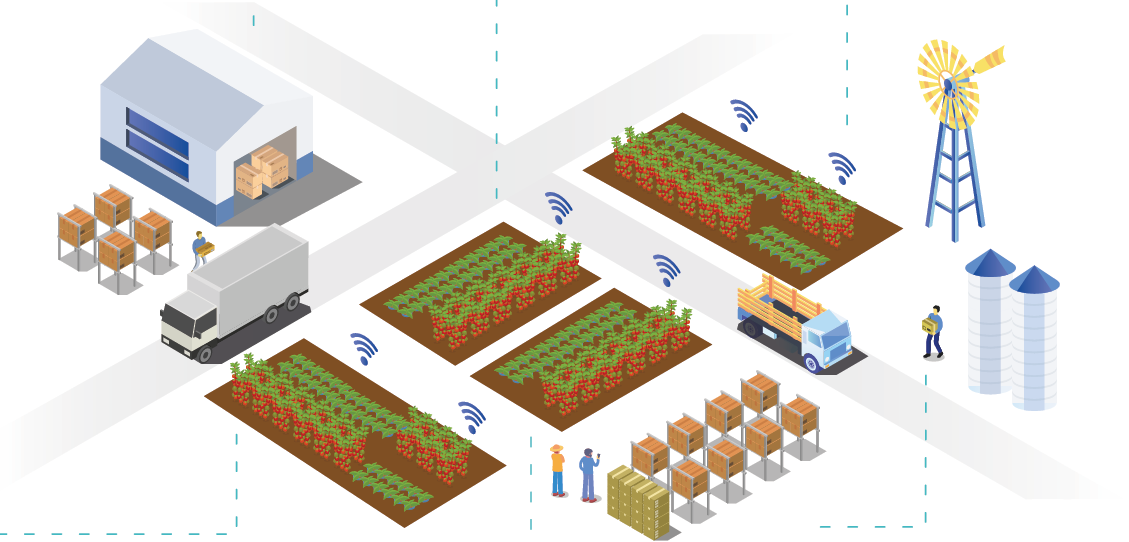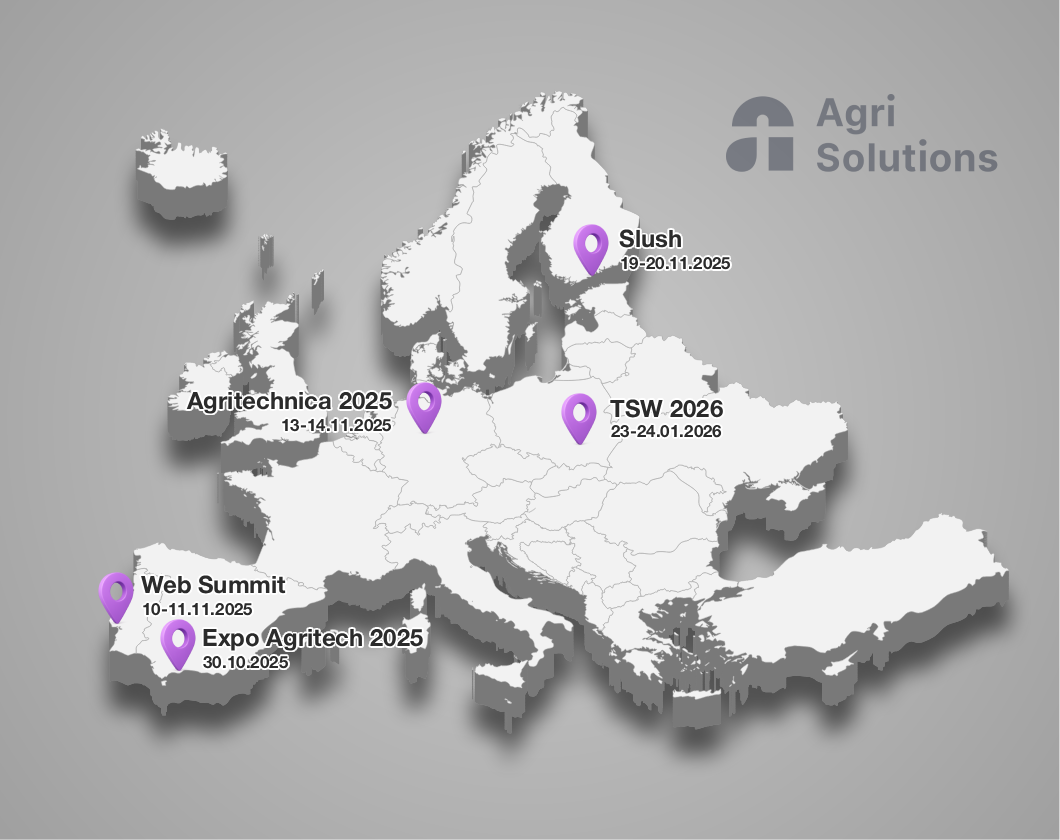Background
Agros Nova is one of Eastern and Central Europe’s most prominent food production and processing companies. As part of the Maspex Group, Agros Nova is also a significant crop contractor in Poland. One of the critical semi-finished products used in various food production processes is concentrate made from open soil-grown tomatoes.
Therefore, Agros Nova started an R&D project to increase the volume and efficiency of open-soil-grown tomatoes in Poland. Instead of importing tomatoes from other EU countries, they intended to decrease the cost of tomato concentrate production by contracting new, specially grown field tomato varieties from local farmers. The new breed would help increase annual yield and the repeatability of yielding.
To achieve these goals required a complex and entirely new approach in three major areas:
- To research and breed a new variety of tomatoes.
- To research and collect all data needed for digitally supported farming tomatoes on open fields, including fertigation, instant monitoring of plant nutritional status, crop growth process, and harvest volume estimation.
- To develop and introduce a complete and integrated crop management system based on proprietary machine learning solutions, analyze image data collected from sensors and satellites, and optimize management processes.
Challenge
Based on previous research and existing data, Agros Nova needed an algorithm for managing tomato cultivation. Importantly, the algorithm should make recommendations regarding irrigation and fertilization of the crop to deliver better results than cultivation carried out by humans.
To achieve their goals, Agros Nova needed an integrated, whole crop control and management system to cover several critical issues:
Fertilization and Fertigation
- Identification of plant nutrition status with 95% accuracy, providing information to field owners within 24 hours.
- Recommendations for fertilization parameters during irrigation, enabling an independent system activation.
There were no field tomato irrigation and fertilization management systems in Poland before the start of the project.
Irrigation
- Recommendations for irrigation parameters within 24 hours of collecting meteorological data and capturing images.
- Independent activation of the irrigation system.
Crop Yield Estimation
- Estimation of harvest size with 3% accuracy using satellite imagery.
Increased Yields
- Achieving yields up to 50% higher than traditional crops through the system recommendations.
When the project started, there were no systems on the world market for managing the cultivation of field tomatoes for food processing based on artificial intelligence and supported by satellite imaging. Agros Nova would need a brand new, custom system to achieve their goals.
Solution
Agri Solutions was chosen to develop, integrate, and introduce the whole crop control and management system. To recommend irrigation and fertilization treatments and estimate crop yields, Agri Solutions employed a hybrid approach. They combined existing mechanistic algorithms simulating the growth processes of crops with machine learning/artificial intelligence algorithms.
Mechanistic models consider meteorological conditions, soil parameters, and plant parameters to calculate water and mineral nutrient requirements and predict plant growth until harvest.
Fertilization
Before plant growth, soil fertility was assessed regarding NPK (Nitrogen, Phosphorus, Potassium). Machine learning (ML) models were trained on satellite imagery and soil test results to estimate NPK mineral quantities in specified plots. Satellite images provided input parameters such as light intensity at specific wavelengths corresponding to the presence of a particular element in the soil.
Using WOFOST (The World Food Studies simulation model "WOFOST", a mechanistic model for the quantitative analysis of the growth and production of annual field crops plant growth simulations), mineral nutrient requirements were calculated. This can then be used to accurately determine fertilizer deficit and define fertilization schedules according to plant needs during growth.
Various versions of cultivated plots with different fertilization levels were created. Vegetation levels were assessed and compared with the WOFOST model using vegetation indices calculated from satellite images and simulations. That led to the development of an Al model to evaluate plant NPK needs during growth.
Irrigation
The FAO56 irrigation and WOFOST algorithms were calibrated with satellite images, soil moisture coe cients, and soil moisture values measured with lysimeters.
Based on water demand simulations, meteorological conditions, irrigation practices, and satellite images, the need for irrigation and the required water quantity for maximizing crop yield were forecasted.
Fertilization and spraying timings
Using the Delta-T algorithm based on temperature and relative humidity, the optimal time of day for fertilization and spraying was calculated to maximize the absorption of applied substances by the tomato plants.
ML models were created to predict the timeframe for conducting treatments based on local weather forecasts and the designated climatic zone.
Harvest estimation
Satellite imagery was also used for harvest estimation with the WOFOST algorithm, forecasting yield based on meteorological data, water availability, and NPK fertilizers.
Video from cameras mounted on tomato harvesting machines was used to train the AI model for yield estimation. AI algorithms calculated the yield from a given geographical area and then compared it with indices from satellite images and results from the WOFOST algorithm.
Result
Agri Solutions developed a unique solution, exceeding the capabilities of comparable systems available on the global market, delivering measurable benefits including:
Cost reduction
Agros Nova has cut tomato growth costs by improving efficiency and reducing waste. Their system prevents overwatering and over-fertilization, detects pests and diseases early, and automates nutrient application. The Agri Solutions solution recommends fertilization and spraying within 24 hours using weather data and satellite imagery. Real-time crop monitoring reduces pest risks and minimizes manual labor and costs.
Increased productivity
Agros Nova has boosted crop productivity with the new system. Optimized fertilization and irrigation deliver higher yields from the same acreage and improve crop quality, including increased dry mass and lycopene levels. This enables consistent, high-quality produce for contractors and processing plants.
Improved strategic capabilities
The new system uses AI and machine learning to optimize planting strategies by revealing key correlations between variables. Agri Solutions's solution analyzes large datasets, enabling faster, more accurate decisions. It provides over 95% accuracy in assessing plant nutrition and automatically translates insights into crop management actions to maximize yield per acre.
Ease of implementation and scalability
The IT system and algorithm run in the cloud, ensuring access from anywhere. Cloud deployment enhances scalability, simplifies maintenance and updates, and significantly lowers costs.
IoT implementation
The system enables seamless cooperation between various IoT devices, like soil moisture sensors. An intermediate software layer integrates different drivers into a single virtual controller, allowing the system to consistently recognize and interact with hardware in a uniform way.
Unique
No other product today offers the same functionality, capabilities, or transformative possibilities. Agri Solutions’s solution has great potential for using the generated artificial intelligence and imaging algorithms to support the production of other plants, plantation crops, or forest monitoring.





